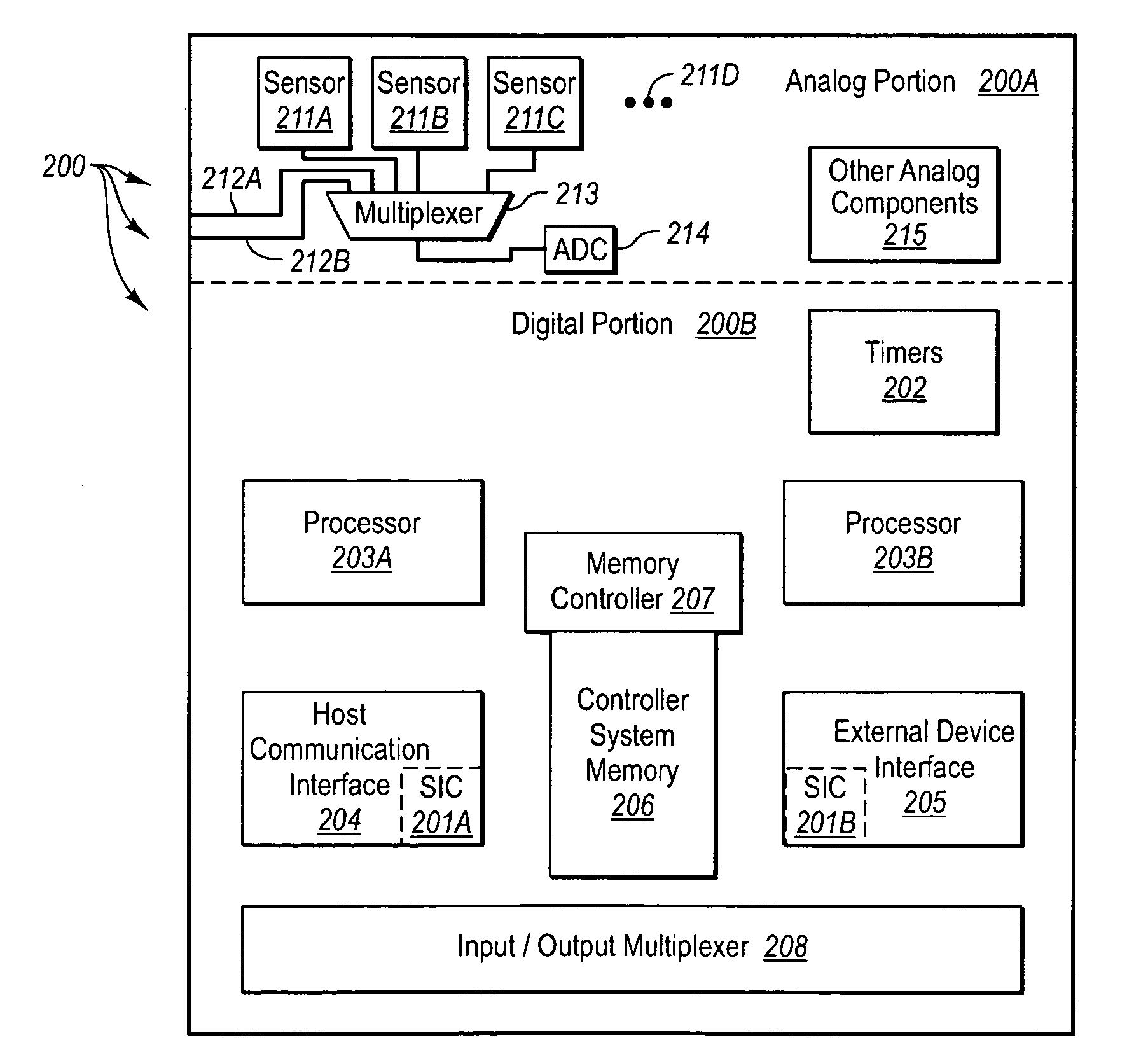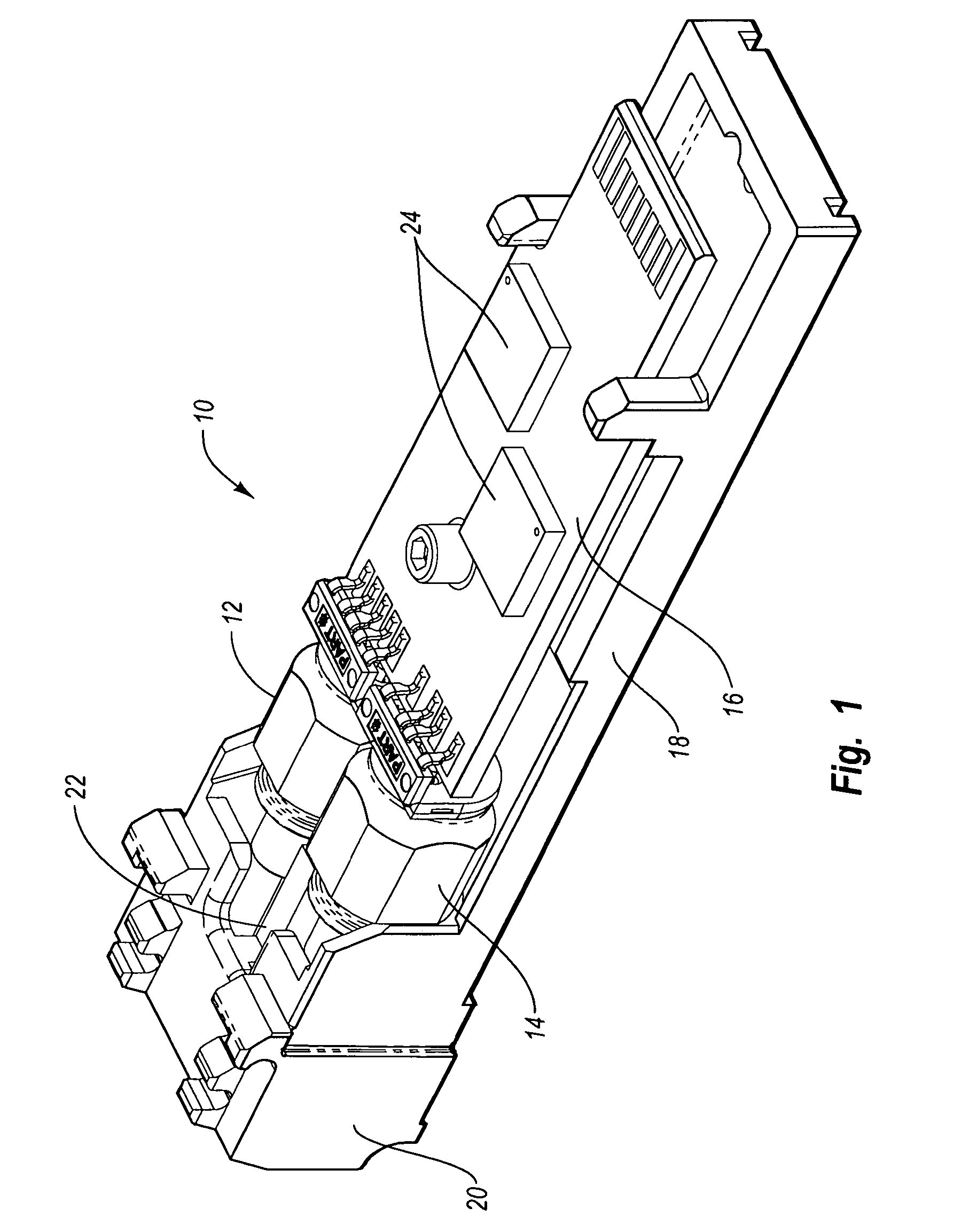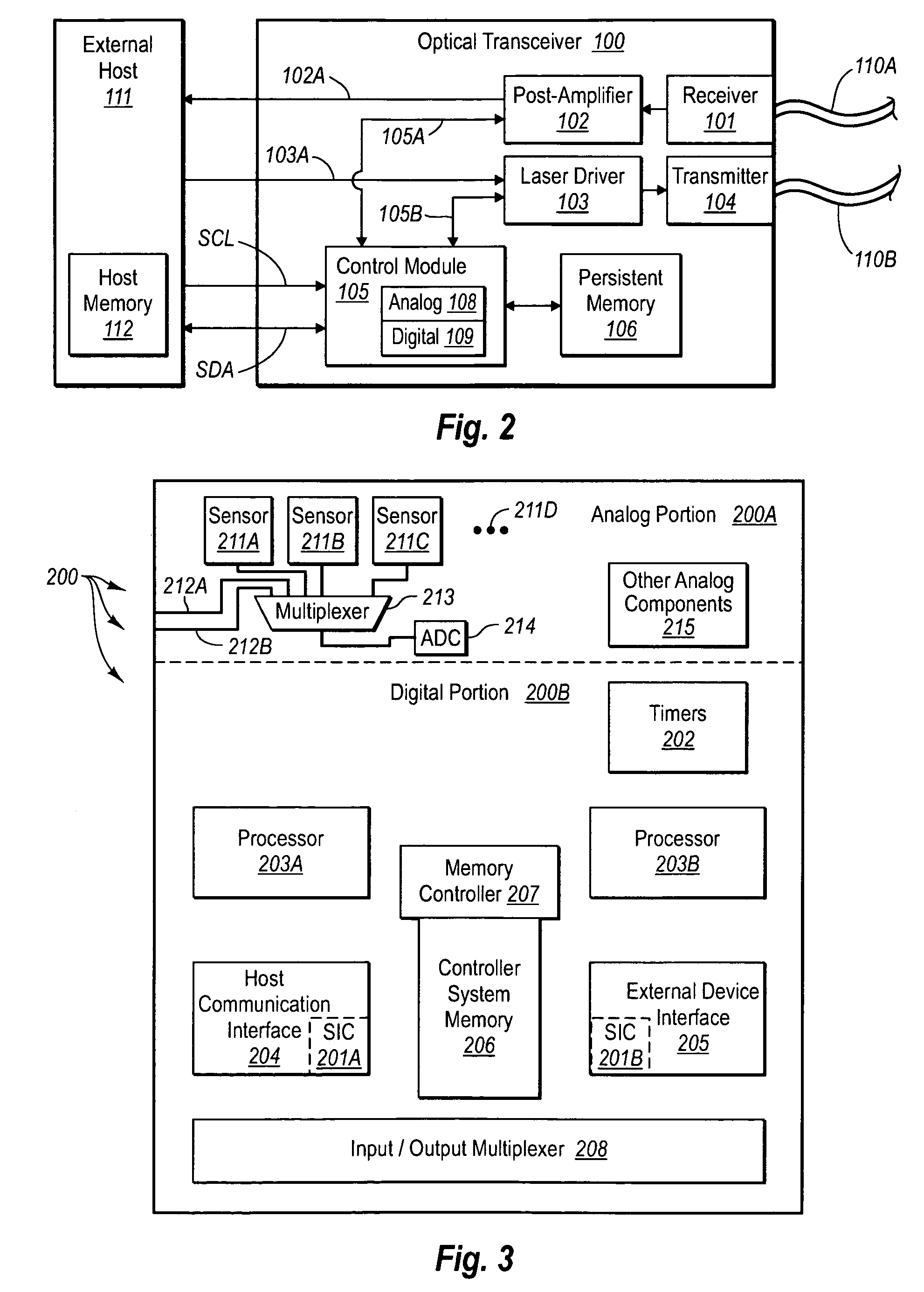Compensation for temperature and voltage effects when monitoring parameters in a transceiver module
a transceiver module and temperature and voltage technology, applied in electromagnetic transceivers, photometry using electric radiation detectors, transmission monitoring, etc., can solve the problems of not being able to capture the complex interrelationship of various environmental and/or operational parameters, and accurately determine the laser power, accurately determine the coupling efficiency of optical signals, accurate laser power estimation
- Summary
- Abstract
- Description
- Claims
- Application Information
AI Technical Summary
Benefits of technology
Problems solved by technology
Method used
Image
Examples
Embodiment Construction
[0021]The present invention is directed to systems and methods for providing accurate calculations of monitored parameters relating to the operation of an optoelectronic device, such as an optical transceiver module (“optical transceiver” or “transceiver”). One monitored parameter of particular interest is laser power, or the amount of light emitted from a laser diode or other light source included in the transceiver. Laser power in one embodiment is calculated by accurately monitoring diagnostic data of the transceiver, then using the diagnostic data to calculate laser power according to a formulaic relationship that is stored and executed within the transceiver. Accurate calculations of laser power can help ensure, for instance, that sufficient coupling efficiency targets are achieved, or that proper eye safety is maintained by preventing operation of the laser when laser power exceeds permitted thresholds.
[0022]As used herein, the term “manufacturer” will refer to an entity that ...
PUM
 Login to View More
Login to View More Abstract
Description
Claims
Application Information
 Login to View More
Login to View More - R&D
- Intellectual Property
- Life Sciences
- Materials
- Tech Scout
- Unparalleled Data Quality
- Higher Quality Content
- 60% Fewer Hallucinations
Browse by: Latest US Patents, China's latest patents, Technical Efficacy Thesaurus, Application Domain, Technology Topic, Popular Technical Reports.
© 2025 PatSnap. All rights reserved.Legal|Privacy policy|Modern Slavery Act Transparency Statement|Sitemap|About US| Contact US: help@patsnap.com



